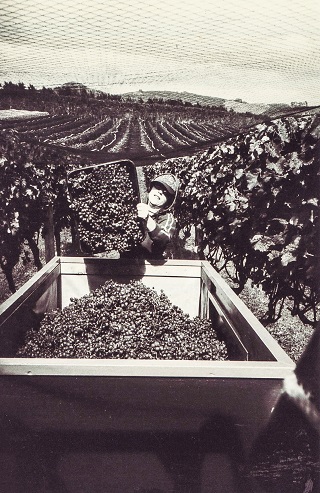At first glance, the history of wine in New Zealand looks short - very short. Wines made from classic European grape varieties have only been widely available since the 1980s and only since the 1990s have the country’s sauvignon blancs and – later - pinot noirs carved out a significant presence in international markets.
Yet the grapevine was a common sight in the early colonists’ gardens, and by the time of the signing of the Treaty of Waitangi in 1840, the first recorded New Zealand wine was already bottled. Wine has in fact had a long, tortuous and fascinating history in New Zealand.
Samuel Marsden, an Anglican missionary, made the first recorded planting of grapevines at the Bay of Islands in 1819. The earliest recorded winemaker was Scotsman James Busby, appointed the first British Resident in New Zealand. When the French explorer, Dumont d’Urville, visited Busby at Waitangi in 1840, he was given “a light white wine, very sparkling and delicious to taste...”
French priests and peasants, Hawke's Bay pastoralists, Croatian gum-diggers and others preserved the flame ignited by Busby throughout the 19th century. But the assaults of oidium (powdery mildew), the vine-destroying phylloxera aphid, and prohibitionist zealots together ensured that the early dreams of a flourishing antipodean wine industry faded.

The 1920s and ‘30s witnessed gradual but unspectacular growth. The wine industry boomed during the Second World War - when duties were raised on imported wines – and expansion continued. During the 1950s and ‘60s, due to a string of legislative concessions by successive governments, including major reductions in the minimum amounts of wine that could be sold by winemakers, approval for more retail outlets, and the licensing of restaurants to sell wine in 1960.
An outstanding feature of the 1960s and 1970s was heavy investment by overseas companies, Australian and American. The 1970s also brought an overall improvement in wine quality and heavy emphasis on the production of light, fruity, slightly sweet white wines, based on the heavy-cropping variety, muller-thurgau.
In recent decades, most Kiwi wine drinkers have developed a taste for fully dry wines, made from such classic varieties as sauvignon blanc, chardonnay, pinot gris and pinot noir, which now dominate the industry’s output. Wine has played a key role in the emergence of the country’s thriving café culture.
New Zealand wineries originally set out to serve the small domestic market, operating within a highly regulated economy. But in 1985 the government moved to speed up the removal of barriers against overseas wines, allowing Australian wineries to contest the New Zealand market on an equal footing by 1990.
Spurred into action by their heavy loss of domestic market share, the winemakers launched a sustained export drive. The value of New Zealand’s wine exports has skyrocketed from $NZ18 million in 1990, to a forecasted rise to $2 billion by 2020.
New wine companies are mushrooming, from Northland to Central Otago. Thirty years ago, there were fewer than 100 New Zealand wineries; today the ranks have swollen to over 670. The wine industry is forever abuzz with the excitement of new companies, new faces, new labels.
Samuel Marsden observed almost 200 years ago that “New Zealand promises to be very favourable to the vine”. His prediction has lately been brilliantly fulfilled.
Written by Michael Cooper: www.michaelcooper.co.nz



